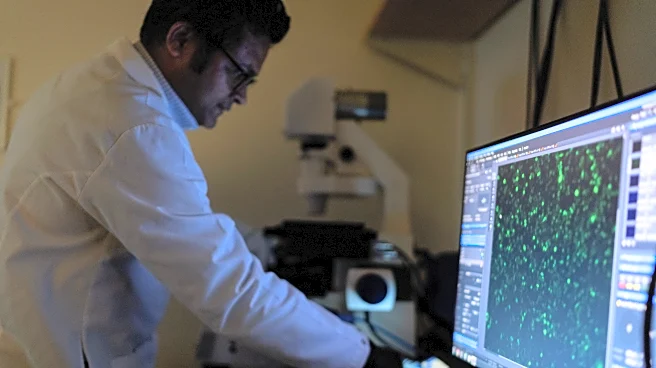What's Happening?
Recent research has identified the mechanisms by which somatically acquired mutations in the E1 ubiquitin-activating enzyme UBA1 cause VEXAS syndrome, an adult-onset autoinflammatory condition. The study used somatic gene editing to model these mutations in primary
macrophages and hematopoietic stem and progenitor cells (HSPCs). Findings revealed that UBA1 mutations lead to clonal expansion in the myeloid compartment and cause aberrant cell death in macrophages through pathways involving Caspase-8 and RIPK3-MLKL. The study highlights the role of ubiquitin-associated defects in the pathogenesis of VEXAS and suggests potential therapeutic targets.
Why It's Important?
Understanding the mechanisms behind VEXAS syndrome is crucial for developing targeted therapies for this and similar autoinflammatory conditions. The study's findings provide insight into the cellular processes affected by UBA1 mutations, offering a potential pathway for intervention. By linking VEXAS to other monogenic autoinflammatory syndromes, the research opens avenues for broader applications in treating related diseases. This could lead to improved management strategies and outcomes for patients suffering from these complex conditions.
Beyond the Headlines
The study's use of advanced gene editing techniques to model disease mechanisms represents a significant step forward in biomedical research. It underscores the importance of exploring genetic and molecular pathways in understanding disease etiology. Additionally, the research highlights the potential of targeting specific cellular processes, such as the inflammatory cell death axis, in developing new treatments for autoinflammatory diseases.














